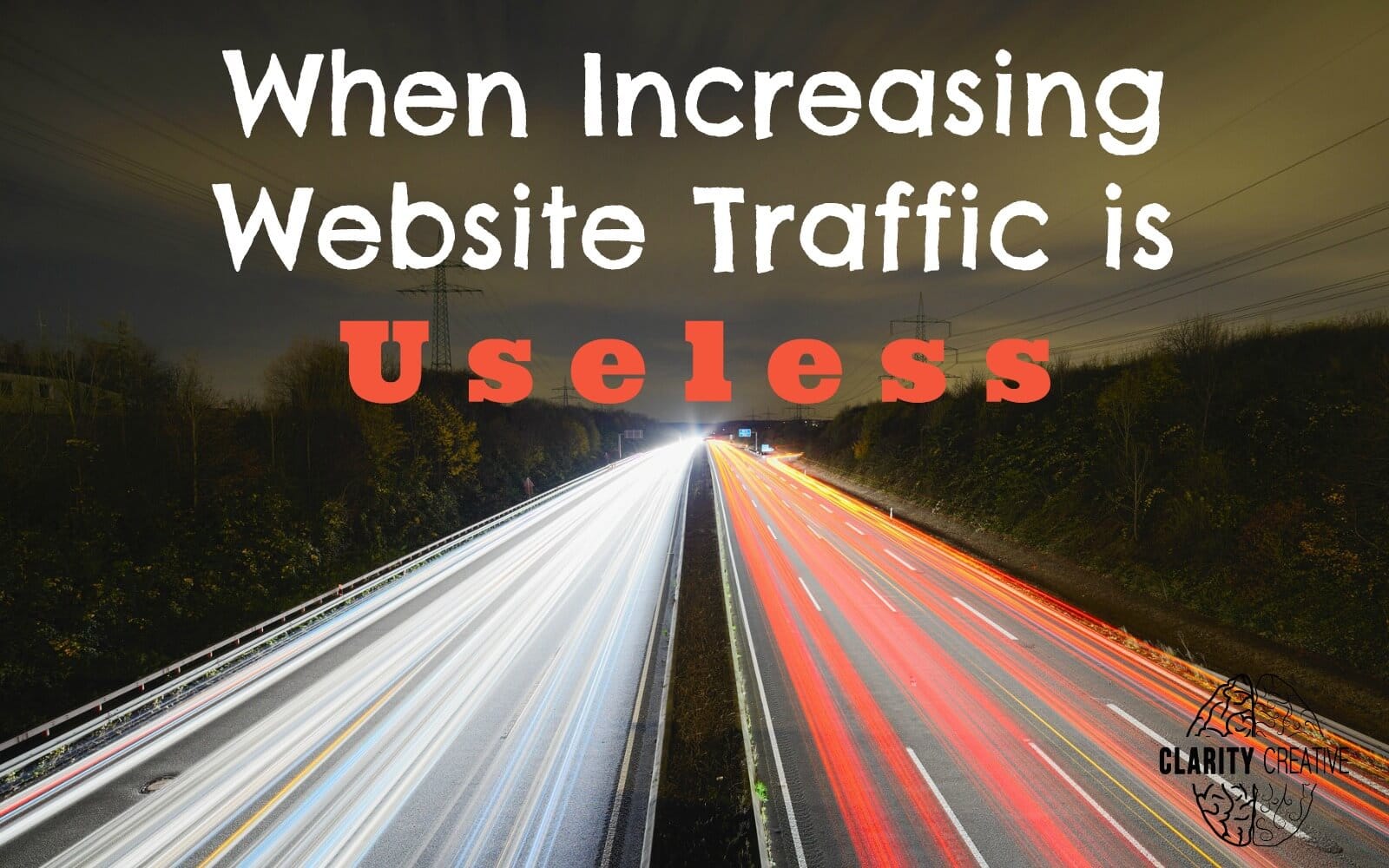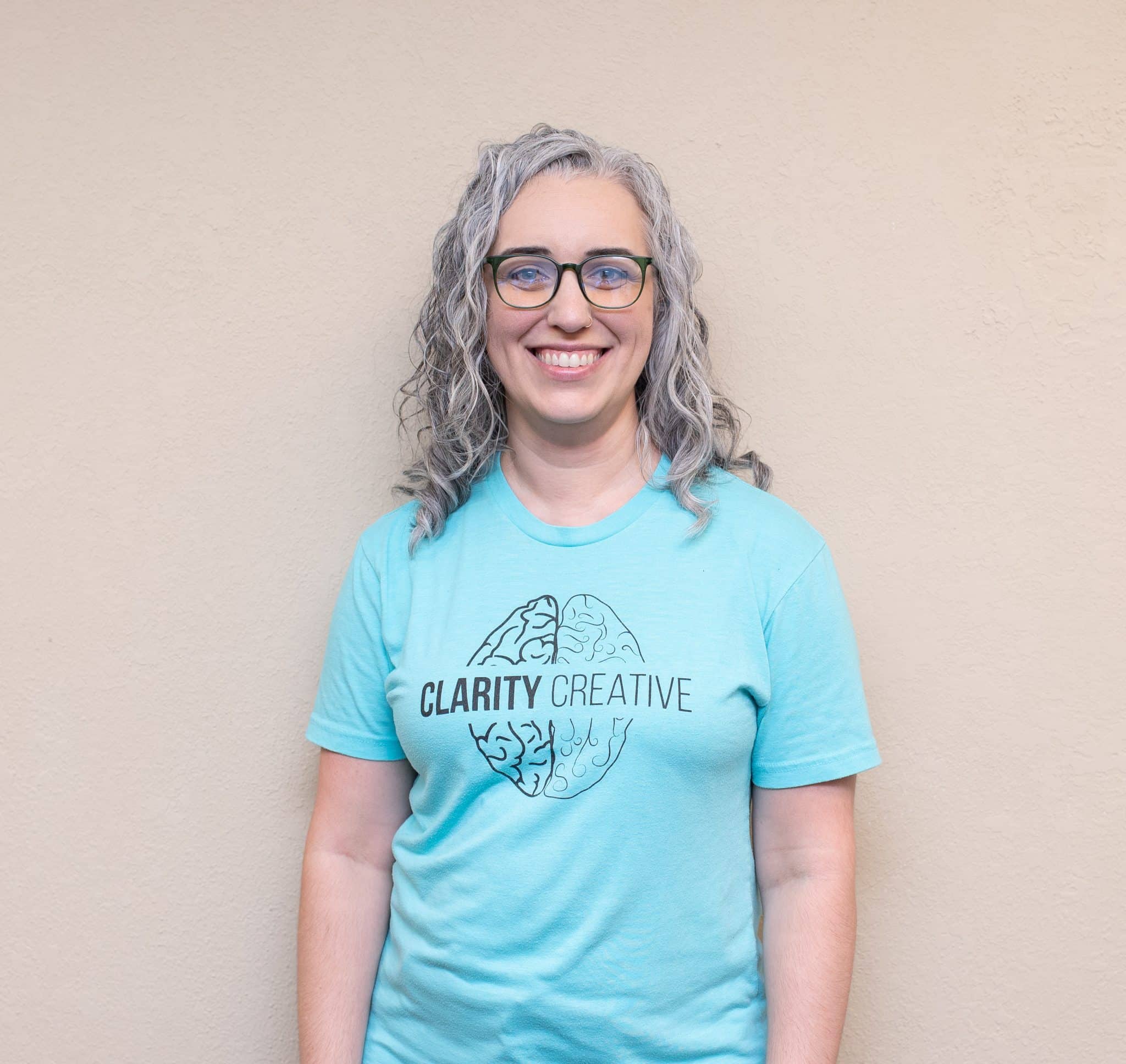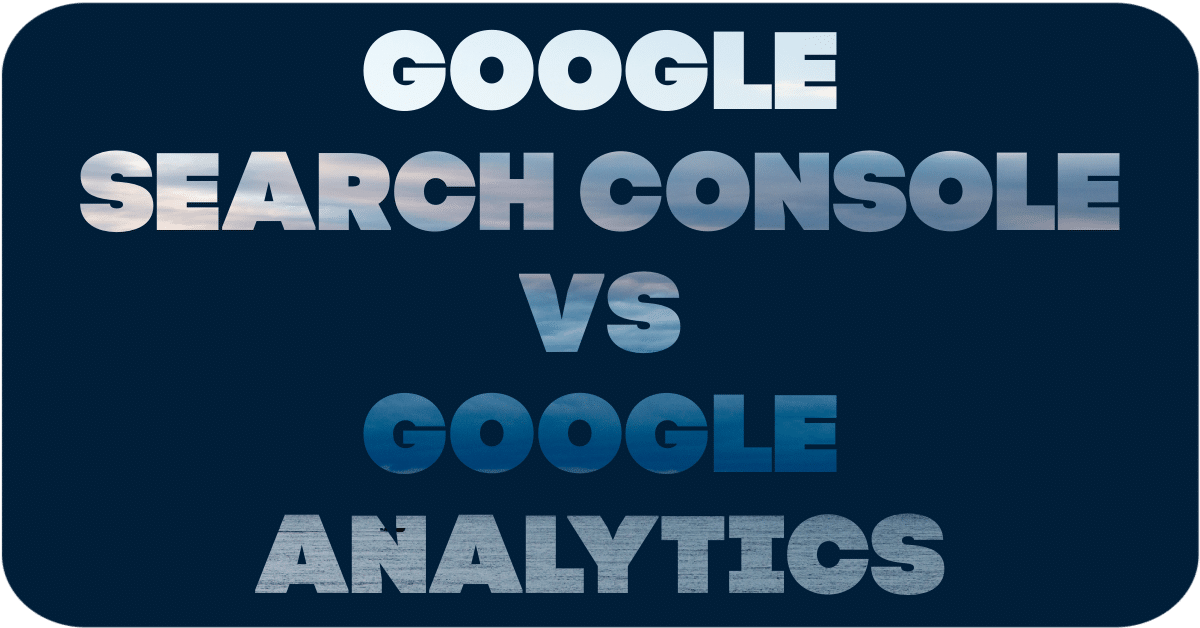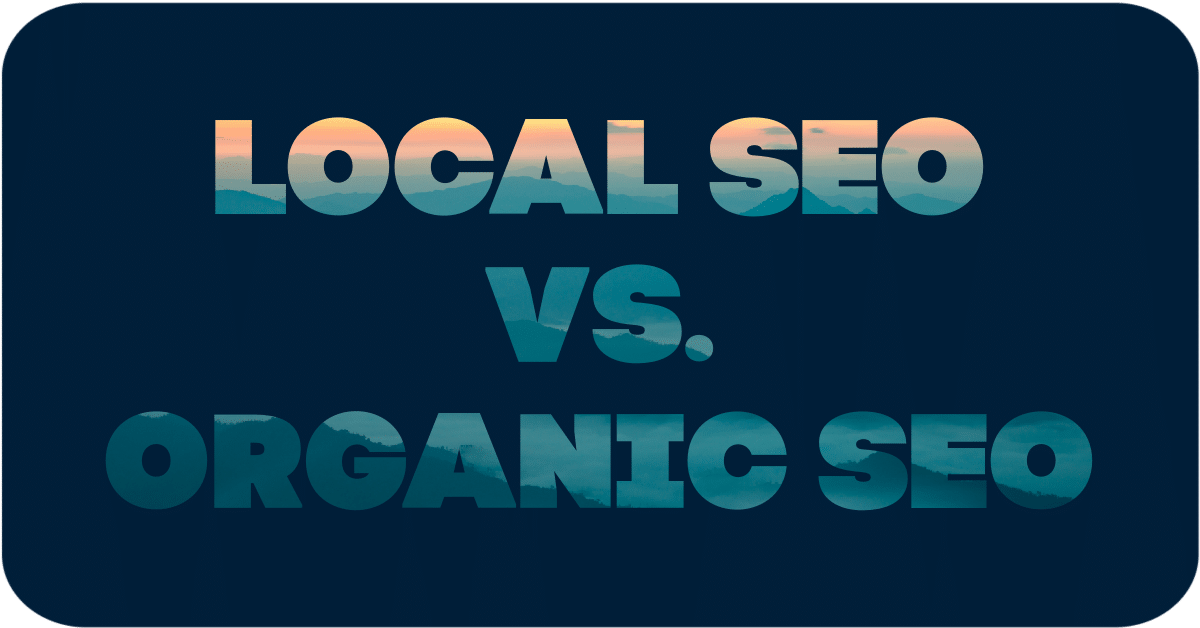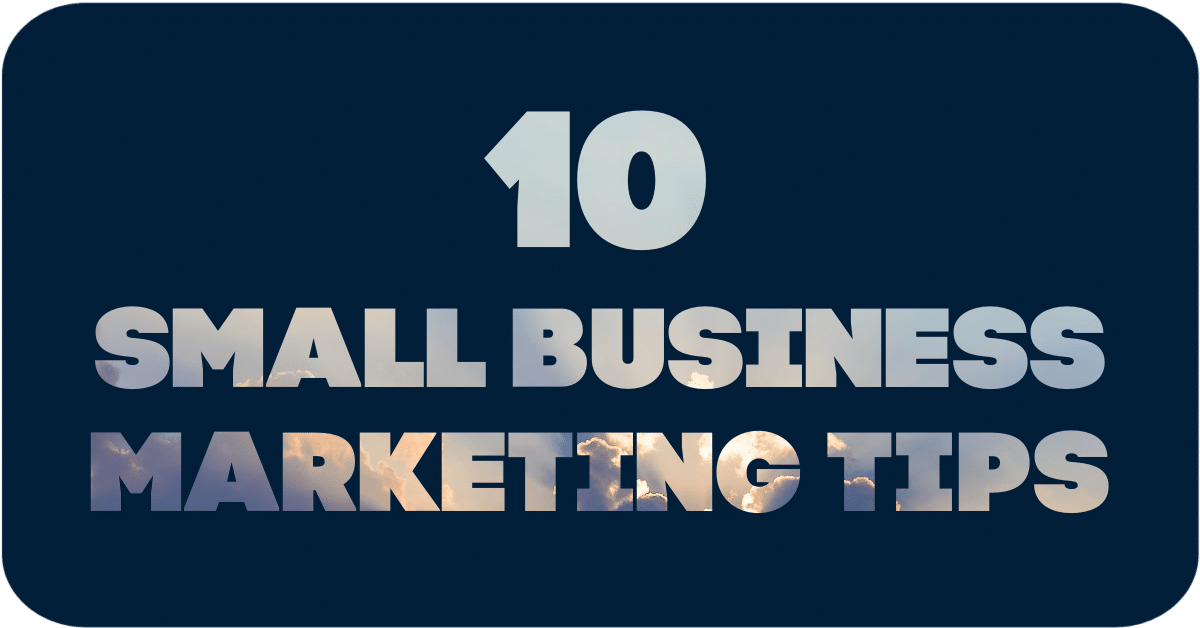Not to cause a complete panic, but increasing website traffic is useless.
“What?” I can hear you saying. “I spent a lot of money on this website! Are you telling me that I wasted my money?! What does your business do, anyway?”
You heard me. Increasing your website traffic is useless if you’re ignoring what you really want to get out of your website. Which is?
More sales.
Duh.
When Increasing Website Traffic is Useless

Too many business owners are obsessed with trying to increase traffic to websites, but they forget that increased traffic is NOTHING if their bounce rate is high (i.e. the rate at which people visit only one page of a website, then leave). The point of having a website is to have a return on investment. If 0% of your site visitors convert into customers, then you wasted any money you spent on the site.
So what can you do to bring more customers to your site (“customers” meaning “people who pay you money”)? We’re so glad you asked.
1. SEO

Yeah, I know I just went through a whole spiel about how “useless” it was to increase web traffic, but that was a bit of an exaggeration (but just a bit). Because, as it turns out, you can’t have sales if you don’t have customers, and you can’t have customers if nobody knows that you exist.
SEO or “search engine optimization” aims to get your website out to as many potential customers as possible. Getting on the 1st page of Google is a typical goal, but anything that gets your website in front of an audience will work.
At Clarity, our SEO is a multi-faceted strategy. Your on-page SEO will involve selecting a keyword (there’s a lot that goes into this), updating image alt tags, meta descriptions (the preview you see on Google before you click a link), and categories to make sure that all of Google’s little web crawlers will find the page and categorize it correctly.
If a page isn’t categorized correctly (or categorized at all), no one will ever find it. And those that do will have found it by accident while they were looking for something else. Not what you want.
2. Targeted Advertising

I’m an English major and a writer by trade, so I make a habit of choosing my words very carefully.
It may have slid under your radar, but I made a very conscious word choice a couple paragraphs up. I said that SEO aims to get your website out in front of as many “potential customers” as possible. Not “people.”
Trying to attract everybody is like throwing darts blindfolded. You might hit a bullseye once or twice, but if you did, it would be a complete accident. Most of the time, you wouldn’t get anywhere close.
When you’re doing any type of marketing, it’s important to focus on a certain demographic so you’re not throwing money towards a group that’s not interested in you. Selecting a keyword? Make it as specific as possible. Running a Google Adwords campaign? Target only people searching for your the specific product or service you’re trying to sell more of.
Yeah, you won’t draw in as many people, but you’ll be drawing in more money.
3. Blog
I can hear you guys whining already. But I don’t know how to blog! I don’t know how to write! It takes too long; I get writer’s block; I have carpal tunnel syndrome, blah blah blah blah….
The reason I get so frustrated by these excuses is that blogging really does work, and we have the numbers to prove it.
The chart below shows the website traffic increase on one of our clients’ sites after their blog started posting consistent content. The orange line shows the level of traffic in the months before they started publishing blog posts. The blue line shows what happened when they started posting again in November.
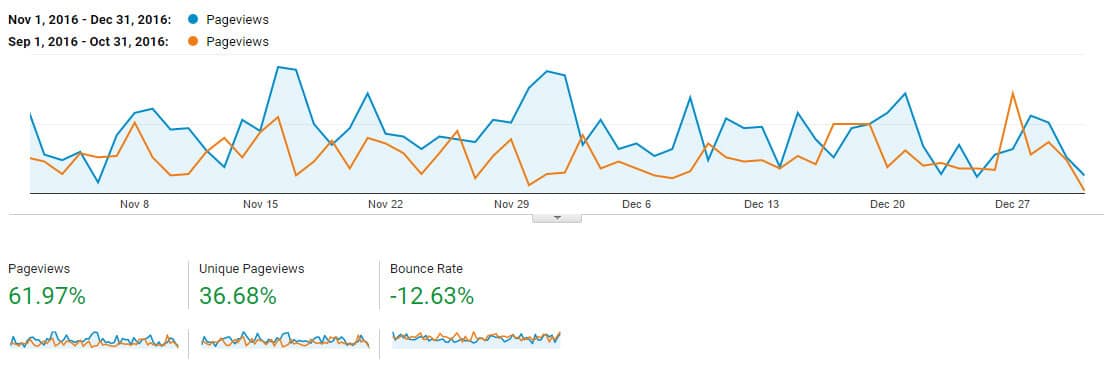
That’s a pretty significant uptick in traffic. And note how the bounce rate went down by 12%.
Each time Google updates an algorithm, they get closer to giving their web crawlers artificial intelligence that mimics what real people are thinking. And real people like to hear from experts.
Having a blog on your website is like a radio signal beaming out into the zombie-filled wasteland. By continuously putting that stream of (trustworthy, accurate) information out there, you increase the odds that people are going to make it to the safety of your bunker website.
But not all blogging is created equal. You want it to:
- be well-written,
- focus on the type of content that generates sales (not just what you want to write about), and
- include a call to action so your visitors will know what to do next.
In other words, ain’t nobody flocking to Negan’s group because ain’t nobody want to be there, capeesh? I’d rather take my chances with the Walkers.
4. Clickable Headlines

“This Chicken Wandered Into a Ramen Restaurant…What Happened Next Will Change Your Life!”
It might be attention-grabbing, but it won’t generate more sales. “Clickbait” headlines only make people feel manipulated. Not a great first impression for a potential customer.
So, does that mean you’re supposed to write bland, pedantic headlines like “My Widgets are Better than X Company’s Widgets”? H to the naw!
There’s a difference between “clickbait” and “clickable.”
Picture a Tinder profile. A “clickbait” profile picture is that one where the guy/girl looks hot, but it’s just smoke and mirrors (sometimes literally) to disguise a regular butterface. (It’s a real slang, look it up.) The “clickable” picture, on the other hand, is intriguing, but you’d still recognize him when you show up for your first date.
Say Hello, and Let's Get To Work Together
5. Guest Posting

Blogging—like anything else worth doing—takes work. You know it, I know it, and every other blogger out there knows it. So wouldn’t it be awesome if someone offered to write a blog post for you? Wouldn’t it be even better if this someone knew enough about your industry to be knowledgeable on the subject, but wasn’t a direct competitor of yours?
Now, what if you could be that knight in shining armor for someone?
Guest posting (publishing your work on another blog or site) is a great way to get your name in front of people who are already interested in your field of work. The way it works is this:
Let’s say you’re a professional home stager trying to attract people who are selling their homes. You contact a local real estate blogger and offer to write a post for them called “6 Ways Home Staging Can Sell Your Home 30% Faster.” The article would mention you by name and include a link back to your site.
The real estate blogger benefits from this transaction because they get an exciting blog post with no work on their part. You benefit because your business (as well as all of your expertise) just got in front of a whole new audience. Not only that, they are reading the real estate blog because they are trying to sell their homes. This audience is your core demographic!
You just increased traffic to your website and got a whole bunch of promising leads.
Guest posting looks good to Google, too. Knowing that other people think your stuff is good enough to publish makes Google trust your site even more.
The one caveat with guest posting is that, while you can retool it a bit, it can’t be a word-for-word copy of an existing post from your site. That’s not just bad SEO, it’s downright tacky.
6. Social Media

According to Pew Research Center, Nearly 70% of U.S. adults are on at least one social media site. Since this is where people are, why not meet them there?
Facebook is big for news and videos (I can’t get enough of Tasty videos!). Pinterest and Instagram are great for images. X is perfect for real-time interaction with your customer base. Image-heavy, Buzzfeed-esque articles are great eye-candy.
And don’t forget about the lesser utilized sites. Start an AMA thread on Reddit. Submit your blog posts to Stumble Upon. Answer questions on Quora or Yahoo! Answers, then point people back to your site for more info.
Social media shouldn’t be your only web presence, but you’d be silly to ignore it completely. After all, sometimes people don’t know that they need your product or service until they see it, so they’ll never think to Google it. Social media puts it out in front of them when they least expect it. Like a ninja.
Conclusion
Websites are crucial for doing business in the modern world, but they aren’t your actual business. Your website is a method of doing business.
If you find yourself becoming obsessed with things like “how to increase website traffic” and “how to get more Facebook likes” while turning a blind eye to things like “bounce rates” and “conversions,” you’re doing yourself and your business a disservice. Focus on your business rather than the method and all the pieces will fall into place.
Do you use any of these tips to draw customers to your site? What works best for you? Let us know in the comments section.
Clarity Creative Group is a digital marketing company located in beautiful Orlando, Florida. I made that clickbait headline up. There’s no life-changing chicken. Sorry to disappoint you.
Save
Save
Save

